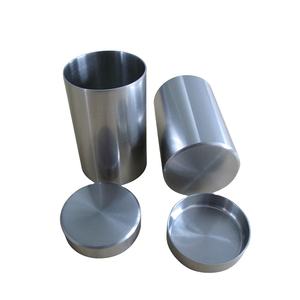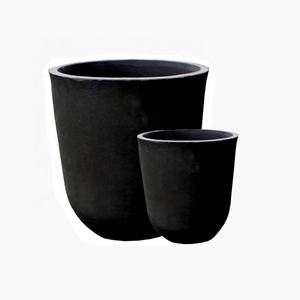High-Quality Silicon Carbide Products | Advanced Ceramic Solutions
PRODUCT PARAMETERS
Description
Overview of Silicon Carbide Ceramic
Silicon carbide (SiC) ceramic is a high-performance material known for its exceptional hardness, wear resistance, and thermal stability. It is widely used in cutting tools, abrasives, automotive components, and high-temperature applications due to its superior mechanical properties and chemical inertness.
Features of Silicon Carbide Ceramic
High Hardness: SiC ceramics are among the hardest known materials, making them ideal for abrasive and cutting applications.
Thermal Stability: They can withstand extreme temperatures without degrading, making them suitable for high-temperature environments.
Wear Resistance: Exceptional resistance to wear and abrasion ensures long-lasting performance.
Chemical Inertness: Resistant to most chemicals, including acids and alkalis, enhancing their durability in harsh conditions.
Low Thermal Expansion: Minimal expansion or contraction with temperature changes, ensuring dimensional stability.
Electrical Conductivity: Some forms of SiC ceramics exhibit semiconducting properties, useful in electronic devices.
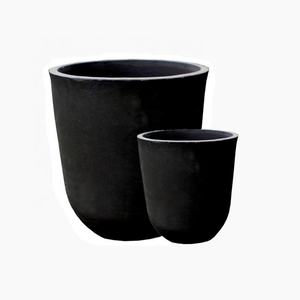
(RBSIC SISIC SIC silicon carbide sic ceramics refractory cut plate)
Specifications of RBSIC SISIC SIC silicon carbide sic ceramics refractory cut plate
RBSIC (Reaction-Bonded Silicon Carbide), SISIC (Sintered Silicon Carbide), and SIC (Silicon Carbide) ceramics are sophisticated refractory products engineered for severe thermal, mechanical, and chemical settings. These materials are perfect for high-temperature commercial applications as a result of their outstanding resilience and resistance to use, rust, and thermal shock. Below are the crucial specs and properties of RBSIC, SISIC, and SIC ceramic refractory cut plates.
** Structure: ** RBSIC is generated by penetrating molten silicon into a permeable carbon-SiC matrix, creating a compound of SiC and residual silicon (10-15%). SISIC is manufactured with high-temperature sintering of pure SiC powder, producing a near-pure ceramic with minimal additives. General SIC porcelains differ by processing yet share a main make-up of silicon and carbon.
** Thermal Features: ** RBSIC runs approximately 1380 ° C, while SISIC withstands temperature levels going beyond 1650 ° C because of its pureness. Both show high thermal conductivity (RBSIC: 50-120 W/m · K; SISIC: 70-150 W/m · K), making it possible for efficient warmth dissipation. Their low thermal growth coefficients (4.5-5.5 × 10 ⁻⁶/ ° C )and exceptional thermal shock resistance make them ideal for rapid temperature cycling.
** Mechanical Features: ** SISIC uses higher mechanical toughness (flexural strength: 350-550 MPa) compared to RBSIC (250-350 MPa) due to its thick, pore-free framework. Both materials are extremely hard (Vickers firmness: RBSIC ~ 2500-2800 HV; SISIC ~ 2800-3200 HV) and lightweight (thickness: RBSIC ~ 3.02 g/cm ³; SISIC ~ 3.10-3.20 g/cm ³).
** Electrical Features: ** SiC porcelains are semi-conductive, with resistivity ranging from 10 ⁻² to 10 ⁶ Ω · cm, depending on purity and doping.
** Corrosion Resistance: ** Both kinds resist oxidation, acids, alkalis, and molten steels. SISIC’s purity improves rust resistance in hostile atmospheres, while RBSIC’s silicon content might limit efficiency in highly oxidizing conditions over 1300 ° C.
** Capacities & Modification: ** Standard plates are readily available in densities from 5 mm to 50 mm, with sizes and sizes up to 600 mm. Customized shapes, sizes, and machined functions (holes, grooves) can be tailored to certain applications.
** Applications: ** Made use of in kiln furniture, heating system cellular linings, heater nozzles, heat exchangers, and incinerators. RBSIC is cost-efficient for moderate-temperature usages, while SISIC excels in ultra-high-temperature and high-stress setups.
These porcelains boost operational performance in metallurgy, power, aerospace, and chemical markets, supplying longevity and integrity under severe problems. Their combination of thermal security, mechanical effectiveness, and chemical inertness makes them crucial for modern-day refractory remedies.
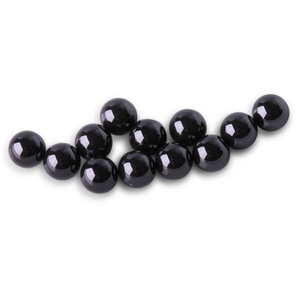
(RBSIC SISIC SIC silicon carbide sic ceramics refractory cut plate)
Applications of RBSIC SISIC SIC silicon carbide sic ceramics refractory cut plate
Applications of RBSIC, SISIC, and SIC (Silicon Carbide) ceramics refractory cut plates extend varied high-temperature sectors due to their extraordinary thermal, mechanical, and chemical residential properties. Reaction-Bonded Silicon Carbide (RBSIC) and Sintered Silicon Carbide (SISIC) are advanced forms of Silicon Carbide (SiC) ceramics, crafted for severe environments. These products excel in thermal conductivity, thermal shock resistance, mechanical toughness, and corrosion resistance, making them optimal for demanding refractory applications.
In metallurgy, SiC ceramic cut plates line heating systems, kilns, and crucibles for melting or handling metals like steel, iron, and light weight aluminum. Their resistance to thaw steel erosion and thermal stability guarantees extended service life in factories and smelting operations. They also function as components in tuyères, burner nozzles, and thermocouple security tubes, where quick temperature variations occur.
The chemical sector depends on SiC refractory plates in reactors, warmth exchangers, and pipes subjected to hostile acids, alkalis, and high-pressure conditions. Their inertness stops contamination and destruction, also in harsh settings. In power generation, they are utilized in gas wind turbine elements, burning linings, and heater components, boosting efficiency by withstanding temperatures exceeding 1,500 ° C while keeping structural stability.
Glass production uses SiC cut plates as kiln furniture, rollers, and molds due to their capacity to sustain repeated home heating cycles without warping. Their reduced thermal growth lessens stress and anxiety throughout quick cooling, important for producing defect-free glass items. Additionally, in aerospace and auto markets, these ceramics are employed in brake discs and engine parts, where high rubbing and thermal tons demand sturdiness.
RBSIC plates, formed through silicon seepage, offer cost-effective options for complex-shaped elements, while SISIC plates, sintered at ultra-high temperatures, give superior pureness and thickness for accuracy applications. Contrasted to typical alumina or fireclay refractories, SiC ceramics lower energy usage, downtime, and upkeep expenses due to their longevity and thermal performance.
In recap, RBSIC, SISIC, and SiC ceramic refractory cut plates are vital in sectors requiring products that integrate extreme heat resistance, mechanical effectiveness, and chemical inertness. Their fostering improves operational dependability, safety and security, and sustainability in the most difficult atmospheres.
Company Introduction
Welcome to It-Chuiko, a premier international supplier of high-quality silicon carbide powder and silicon carbide ceramics. Our products are renowned for their exceptional hardness, thermal stability, and wear resistance, making them ideal for abrasives, cutting tools, refractory materials, and advanced semiconductor applications. We serve a diverse range of industries, including automotive, aerospace, and electronics, with a commitment to quality and innovation. With state-of-the-art production facilities and rigorous quality control, we ensure that our customers receive superior products tailored to their specific needs. Partner with us for reliable, high-performance materials that drive your business forward.
If you have any questions, please feel free to contact us(nanotrun@yahoo.com).
Payment Methods
T/T, Western Union, Paypal, Credit Card etc.
Shipment Methods
By air, by sea, by express, as customers request.
5 FAQs of RBSIC SISIC SIC silicon carbide sic ceramics refractory cut plate
What are RBSIC and SISIC Silicon Carbide ceramics? RBSIC (Reaction-Bonded Silicon Carbide) and SISIC (Sintered Silicon Carbide) are high-performance ceramics known for extreme durability. RBSIC is created by infiltrating silicon into a porous carbon-silicon carbide matrix, offering high strength and thermal conductivity. SISIC is produced through high-temperature sintering without residual silicon, providing superior purity and higher temperature resistance, ideal for ultra-high-heat environments.
What temperature ranges can these ceramics withstand? RBSIC handles temperatures up to 1380°C (2500°F), while SISIC excels in environments up to 1650°C (3000°F). Both retain structural integrity under rapid thermal cycling, making them suitable for applications like kiln components, furnace linings, and aerospace parts where thermal stability is critical.
What industries use RBSIC/SISIC refractory cut plates? These ceramics are used in metallurgy (kiln furniture, crucibles), energy (burner nozzles, heat exchangers), chemical processing (corrosion-resistant components), and aerospace (thermal protection systems). Their robustness in high-heat, abrasive, or corrosive environments makes them versatile for demanding industrial applications.
How do they resist thermal shock and corrosion? Silicon carbide’s low thermal expansion and high thermal conductivity prevent cracking during rapid temperature changes. Their dense, non-porous structure resists chemical attack from acids, alkalis, and molten metals, ensuring longevity in harsh conditions without degrading.
Can these plates be customized? Yes. RBSIC/SISIC ceramics are machinable into precise shapes, sizes, and thicknesses. Customization includes cutting, drilling, or grooving to fit specific equipment like furnace liners or heat-treatment trays, ensuring optimal performance tailored to industrial needs while maintaining their refractory properties.
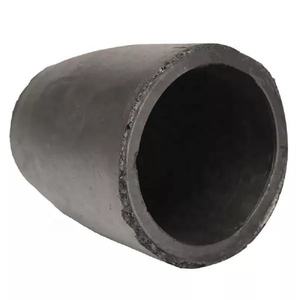
(RBSIC SISIC SIC silicon carbide sic ceramics refractory cut plate)
REQUEST A QUOTE
RELATED PRODUCTS
Customizable 90% Content Silicon Carbide Ceramic High-Temperature-Resistant Silicon Carbide Ceramic Plates High Precision
10PPI 20PPI 30PPI 40PPI Silicon Carbide Foam Ceramic Filter Media for Molten Metal Filtration and Low Pressure Casting

Silicon Carbide SSiC Ceramic Plate/ Tiles For Armor
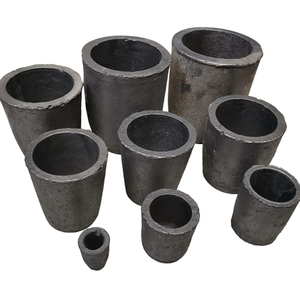
Customized Sic Ceramic Tubes Pipe Plate Tile Parts Silicon Carbide Casting Ceramic Plate and Sic Products

Silicon Carbide Ceramic Bulk Product Angle-Cut Cylinder Tumbling Media Polishing Straight-Cut Cylinder Shape Grinding
